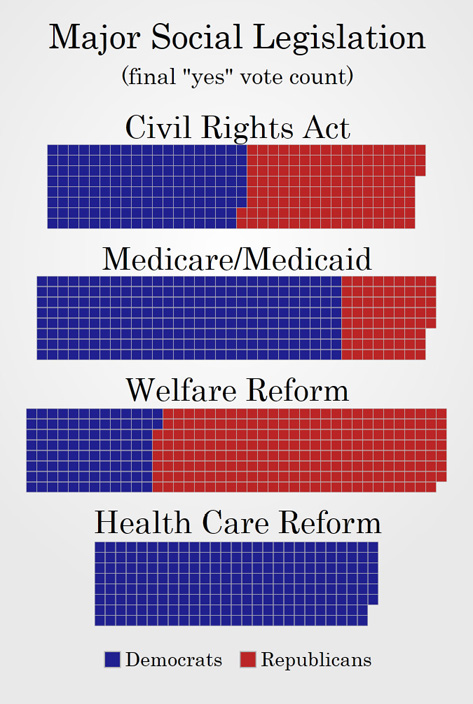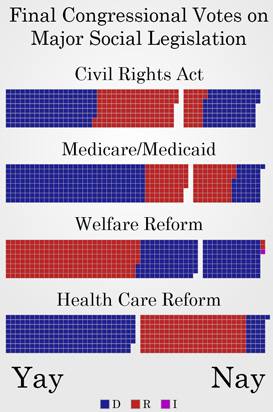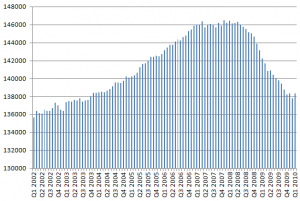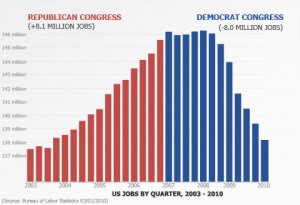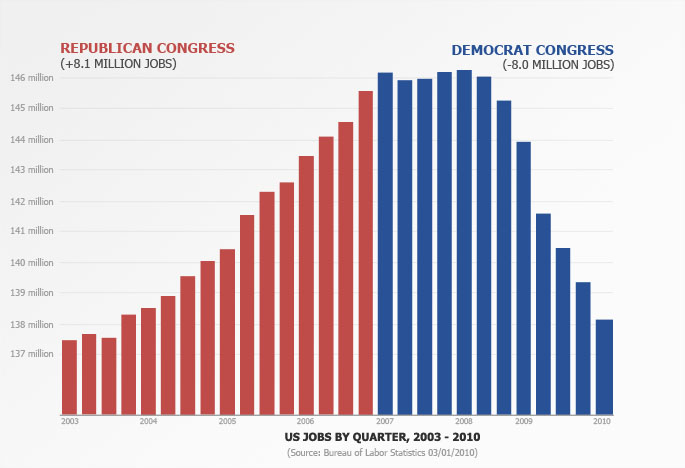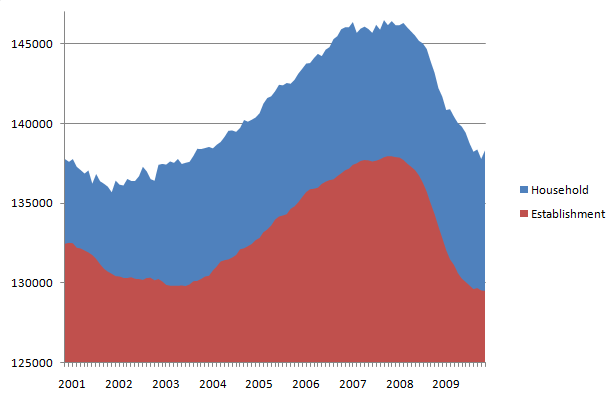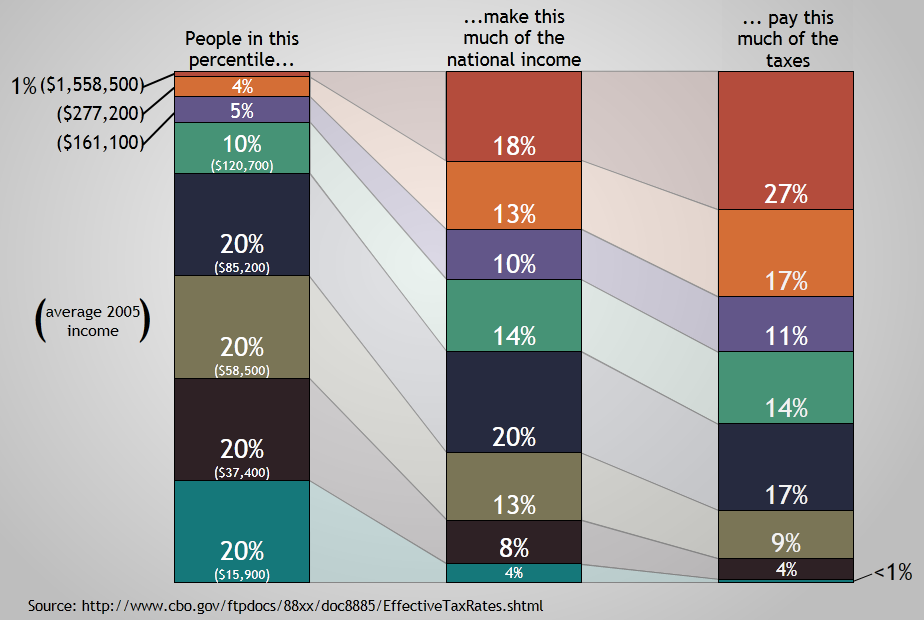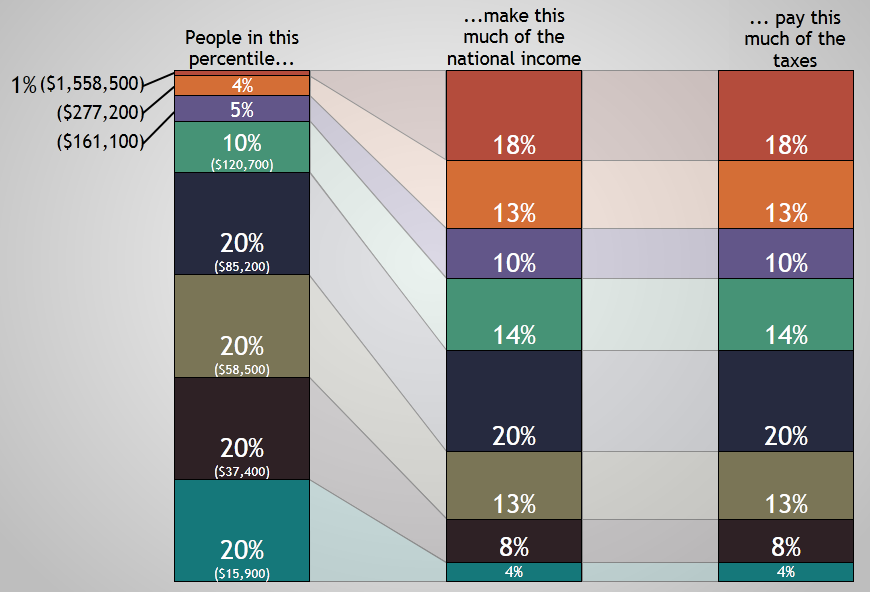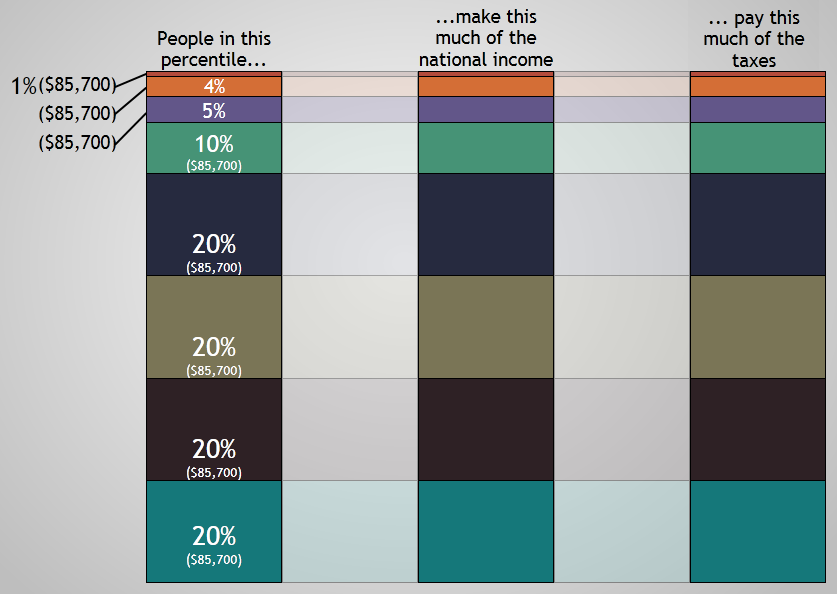I was reading Jonathan Chait (who is really smart) the other day and I came across The Stigmatization Of Bush-Blaming.
A quick summary of the post: It’s right and proper to blame Bush for all the economic and federal deficit unhappiness because it’s really and for true all his fault. But if liberals continue to do it, it sounds whiny petty. So liberals can’t say the truth because it is politically non-viable.
An compelling thesis to be sure, especially when it is supported with this chart that Chait pulled up.
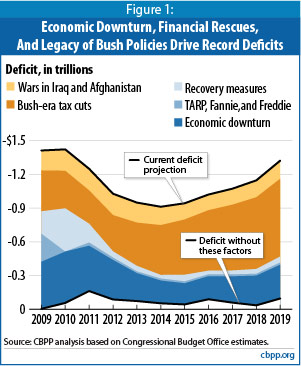
And so, as I am wont to do (and apparently Chait is not wont), I looked for the origin of that chart and found this page from the CBPP (Center on Budget and Policy Priorities) that explains the chart.
<TANGENT>
I would like to decry the practice that I’m am hereby dubbing “source masturbation”. It is when you link to yourself to support your thesis and bury the actual source 2-3 links deep. For example, writing a blog post where you link to a post you wrote that links to a report you put out and the original source is in the footnotes. Media Matters does this kind of thing constantly and I find myself just doing a Google search of what they’re talking about rather than try to follow the links.
This post from the CBPP is actually worse… they link to the footnotes at the bottom of the page which then link to the footnotes inside the report… the ones you just clicked on to get to the bottom of the page! Do they link at any point to anything outside their own website? No. No they do not.
This is the internet, people. Use it.
<End TANGENT>
Moving along.
The problem with this chart is that it implies that:
- the economic downturn is Bush’s fault and will continue to be Bush’s fault
- the tax cuts will extent into 2019 and they will be Bush’s fault
- the Iraq and Afghanistan wars are Bush’s fault.
Let’s start with the last one first. I don’t want to argue the Iraq and Afghanistan wars because it will run something like this. “You’re stupid and a jerk.” “No, you’re the stupid jerk.” “You want to murder babies.” “No, you want to let other people murder babies.” “Why didn’t you go into the Army, you chickenhawk?” “You don’t know anything about me. My sibling/friend is over there right now.” “I hope your sibling/friend is happy killing babies.” (I actually had someone say that last one to me. Dear anti-war people: you may have some valid points, but a lot of the guys on your side are complete a**holes. A**holes don’t persuade very well.)
See how much helpful ground we covered? Let’s just say for the sake of argument that Iraq and Afghanistan is all Bush’s fault and President Obama would get out of there if he could, but he’s trying to be responsible given the situation he found himself in. OK? So 10% of the deficit is due to the wars. What about the remaining 90%?
In this chart, the big item here is the Bush tax cuts. The problem with this analysis is that these tax cuts expire this year. That means President Obama will have to sign them back into law if they are going to continue to be a major factor in the budget deficit. After this year, if they are still in effect, they will be the Obama tax cuts, not the Bush tax cuts.
Furthermore, by the estimates that President Obama’s economic team have come up with, letting these cuts expire will bring in $700 $850 billion over 10 years. (Thanks to John below for pointing out my discrepancy.) Which is like saying that letting these tax cuts expire will pay for the stimulus last year. By the CBPP analysis, getting rid of the Bush tax cuts would bring in… wait for it… $4.4 trillion over the next 9 years. Which is like paying for the stimulus 6 times over.
But if you look at President Obama’s budget, you see that they assume (with the typical optimism associated with any given administration’s budget report) that, with the tax cuts having expired, we will have a $900 billion deficit in 2019. By contrast, the CBPP assumes that, if we let the tax cuts expire, we would have a deficit of $630 billion.
So, putting aside the tax cuts issue, let’s address the economic downturn issue. CBPP assumes that the downturn is Bush’s fault (naturally) and that President Obama can’t do anything about it. They basically say that the “lingering effects” of the downturn (like interest on the debt we accumulated during that period) should also be blamed on Bush.
This strikes me as uncompelling. This is basically a blame shift game that isn’t appropriate for adults. Imagine if a conservative think-tank created a chart in 2008 which we could see how much of the deficit was due to Medicare/Medicaid/Social Security/Other welfare programs. Or what if we assumed that, if Jimmy Carter had never been president, we would have avoided double digit inflation and the following recession and we extrapolated out those benefits to today?
First, those issues are counter-factual. We can’t know the present based on a theoretical past. (This is the first thing that Chait should have noticed. He’s an editor, not an economist, but he should have seen this very plain logical fallacy for what it is.) The President doesn’t get to pretend that he is dealing with part of the fiscal mess and ignore the rest of it because it’s “not his fault”. The President deals with the reality placed before him. Anything less is juvenile posturing.
Imagine that someone inherits a house. The house is seriously messed up due to the poor management of the previous owner. Cracked walls, rotting floorboards, leaky roof. The new owner comes in and promises to fix it up. It is probably unfair to complain a year later that everything isn’t perfect. But it is childish for the owner to ignore the problems by saying “That was there when I got here.”
Everyone knows there were problems. But by inheriting the house, the problems belong to the owner. The CBPP report is a way of posing a counter-factual scenario and saying “These problems don’t belong to President Obama.” I find the whole process absurd.
But the most egregious error (in my view) is the chart. It seems clear to me that the CBPP would rather build a chart to rest the blame as squarely as possible on Bush’s shoulders instead of building a chart that will increase understanding of the issue. They’ve sadly suckered Chait into this nonsense with a chart that tells him something that he might really like to be true, but that doesn’t very closely tack to fiscal reality.

.
![]()









